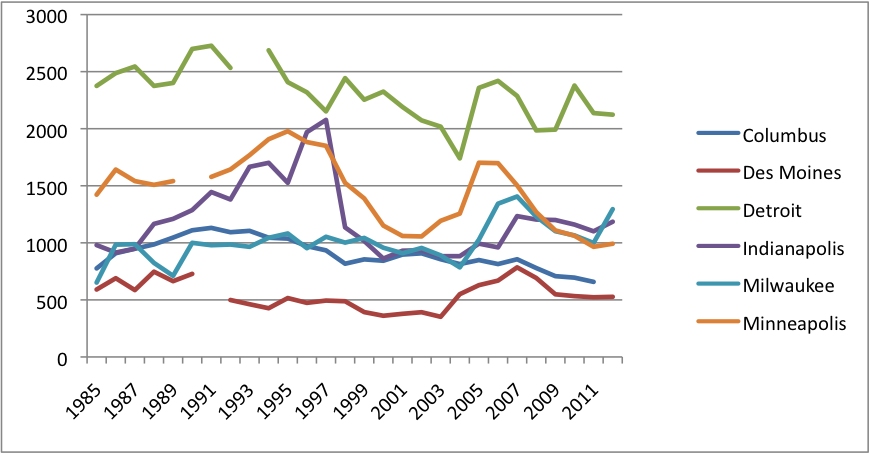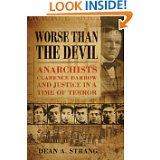Despite their geographical proximity and economic and cultural similarities, the states of the Midwest have had very different rates of violent crime over the past five decades. Moreover, through periods of dramatic increases and decreases in violent crime, the relative positions of the states have remained fairly stable. The low-violence states in 1960 remain at the low end today, while the high-violence states in 1960 remain at the high end today. However, the gap between the high states and low states has been slowly diminishing for many years. In another decade, the state that has historically had the highest rate of violence, Illinois, may conceivably fall to about the same level as the state that has historically had the lowest, Iowa.
Readers of this Blog may know that I have previously written a series of posts on crime and punishment in three midwestern states, Indiana, Minnesota, and Wisconsin (e.g., here and here). With this post, I begin a new series that will explore regional trends more broadly. With violent crime such a staple of local news coverage, I think it’s helpful to be able to place the crime du jour within a wider spatial and temporal context; perhaps this bigger-picture view may lessen the tendency to adopt hastily conceived policy responses to whatever happens to be the latest outrage.
Here are the rates of reported violent crime (per 100,000 residents) in the midwestern states and the U.S. as a whole since 1960:


